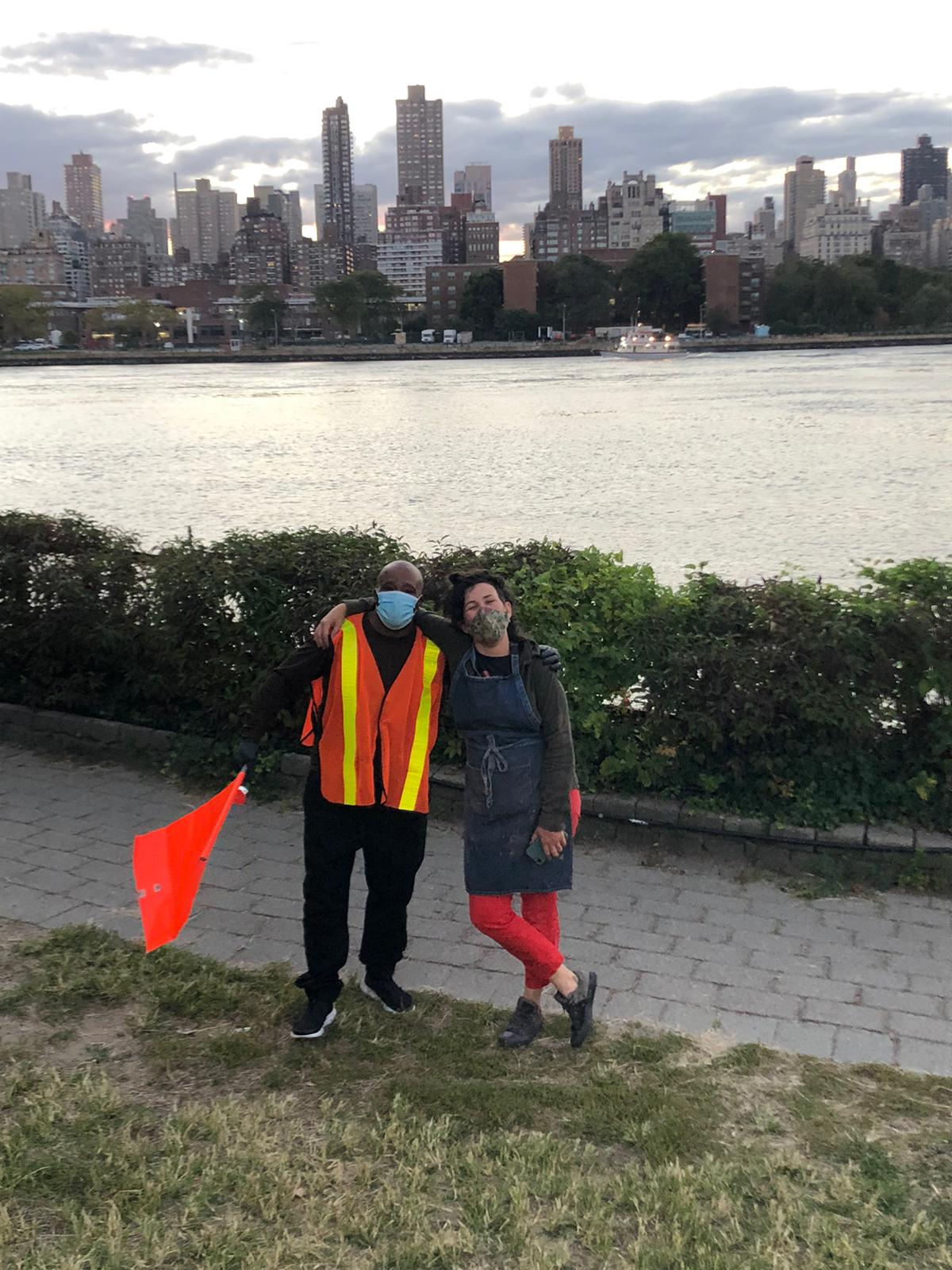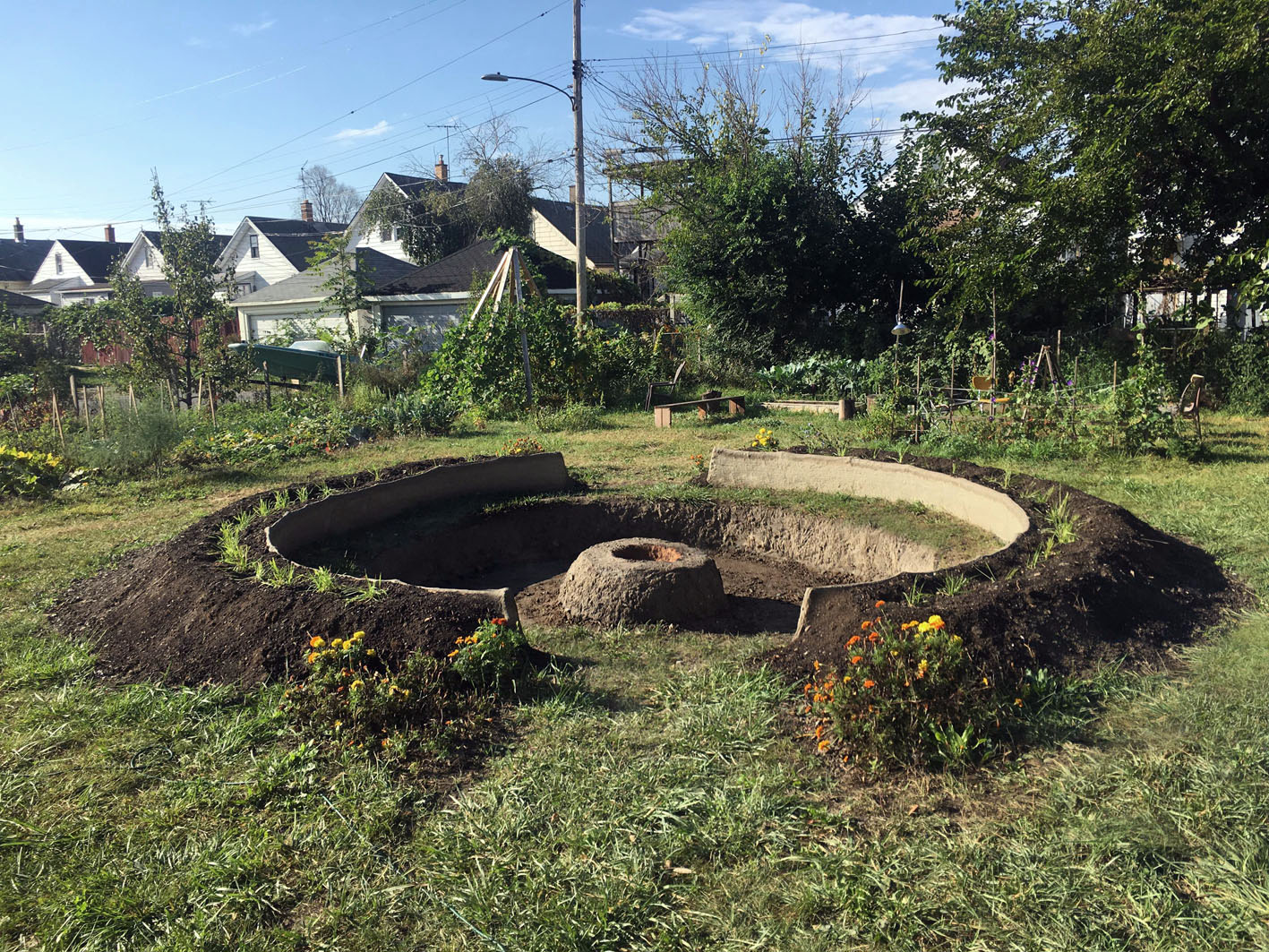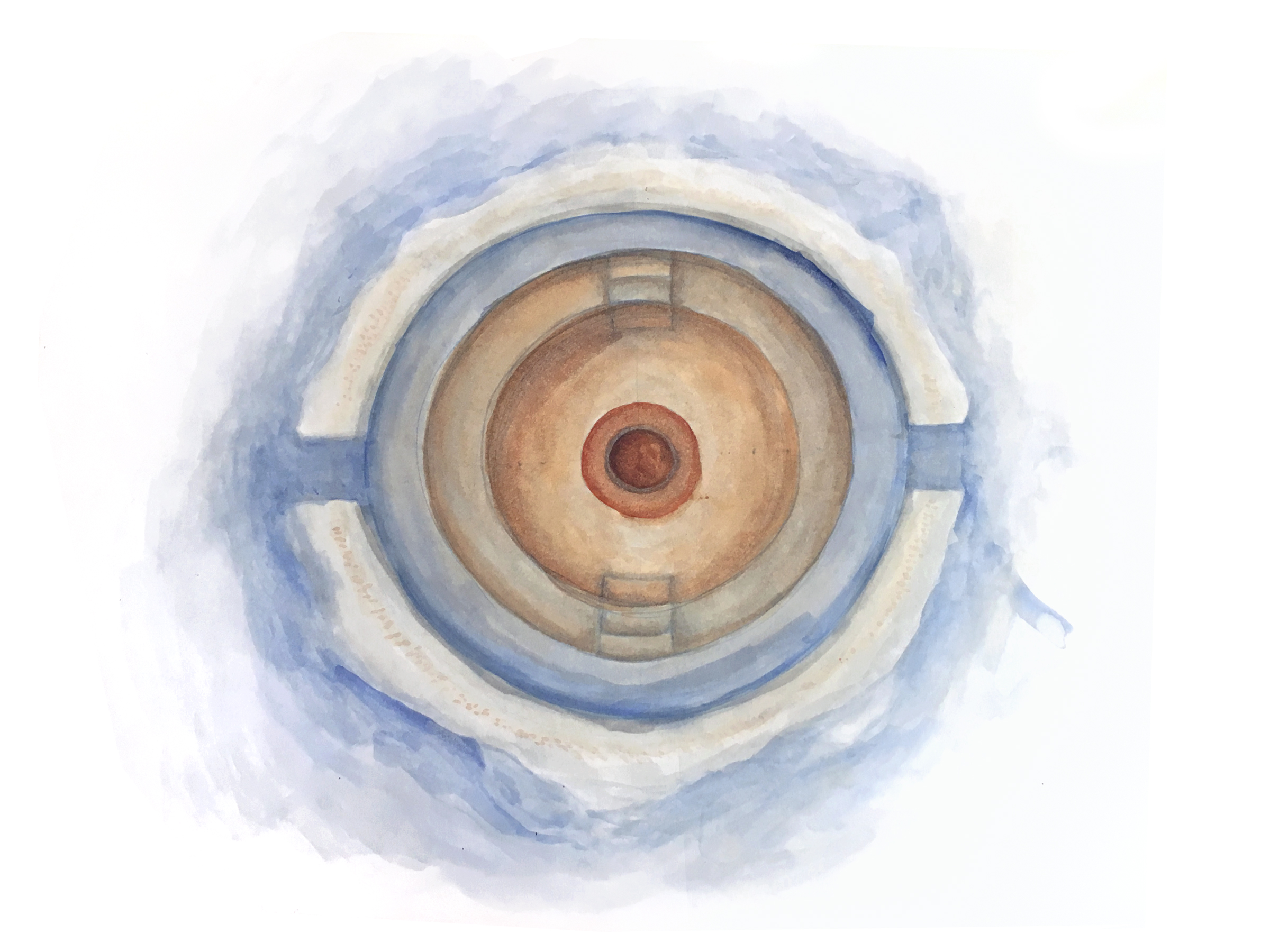






‘The forest has more eyes than leaves’ is an ancient saying shared by the indigenous Brazilian philosopher and activist Ailton Krenak. This gaze that sees everything around us as alive and pulsing, every being as an individual unit and integral part of a greater whole, guides my practice as an artist and educator. The Wave Hill Sunroom Project manifests this knowledge conceptually, spatially and materially with “Floresta de Pulsares [Forest of Pulses]”: a temporary ‘forest’ made with organic matter, sound and paintings.
___
Elaborating on "As Red as Brazil," which delves into the symbolic, political, and chromatic aspects of the brazilwood tree (the first colonial good that gave Brazil its name), “Floresta de Pulsares [Forest of Pulses]” at Wave Hill connects untold stories from the Trees of the Americas (such as brazilwood, but also the Butternut Tree, used by the Confederacy to dye uniforms in the Civil War). It asks, how can we reclaim and honor the stories, colors and symbols of these powerful trees? “Floresta de Pulsares [Forest of Pulses]” aims to create a space for contemplation, reconnection, reflection, ritual and refuge: an opportunity to remember collectively that we are a forest of ever-rippling beings.
Centered on how trees, their colors and the ancient knowledge related to them is used, appropriated and exploited, “Floresta de Pulsares [Forest of Pulses]” seeks to reclaim and honor their stories, their presence and that of the people and beings who live in reciprocity with them. Beyond the trees themselves, the work incorporates organic materials of Wave Hill’s gardens and nearby forests, connecting a multitude of plant species to create one single tree. Hanging from the created tree, cotton stripes painted with natural dyes and an accompanying sound composition, making the site-specific installation an immersive environment.
Honoring the trees' forgotten stories, their companion species and other invisible elements of their presence, the installation represents the resonance of vital pulses in a forest-collage of beings, a reminder of Robin Wall Kimmerer’s call to "invite others into the web of reciprocity”.
Photos by: Stefan Hagen
To listen to the audio piece that was part of the installation click here: https://youtu.be/qllhhnvXz5s
Opening/Activation of the piece in collaboration with Koyoltzintli Miranda-Rivadeneira: https://www.youtube.com/watch?v=Mi8C238PDsU




'Vermelho como Brasil [As Red as Brazil]' is a commissioned work for the biennial exhibition 37th Panorama of Brazilian Art at MAM São Paulo, named "Under the Ashes, Embers". The piece, a fabric installation, made with brazilwood, the tree that gives Brazil its name (and a colonial good).
“Red* marginals will be banished from our homeland.” - Brazilian Presidential Candidate Jair Bolsonaro on the campaign trail in 2018 (*Red here refers leftist/communism, but more broadly refers anyone with liberal thoughts that oppose his far right politics)
As an act of both grieving and remembering, “Vermelho como Brasil [As Red as Brazil]” is a series of fabric dye drawings made in the aftermath of Jair Bolsonaro’s inauguration in 2019. Brazil is named for a tree, the “brazilwood.” This ancient, monumental tree was a commodity valued for its red pigment and logged to near extinction in colonial times. The word Brazil relates directly to the color Red, the same one the president-elected pledged to banish.
As a slowgrowth tree, that almost went extinct due to its extraction (by europeans that wanted the valuable red for their royal robes and paintings), brazilwood is a tree that encapsulate many lessons. During the pandemic the biggest brazilwood tree alive was founded in one of self-organized settlement in the so-called ‘discovery coast’ (where the Portuguese first landed in Brazil), aging around 600 years. The piece for Panorama das Artes has the same diameter of this ancient tree and invite the visitors of the museum to be part of this force, entering the tree and being in touch with this color (so rare for us to have the opportunity to relate to, as Brazilians).
The show opened in 2022, a few months before Bolsonaro lost his 2nd trial for presidential elections.
+ More about [in portuguese]: https://youtu.be/_LSBQWUbQXc






When the whole world is asked to stop it is an invitation. To listen, to make space to the silence, to recall what's in the dark, to remind what sits in the hollow. Can we hold the night in our hands? Hold the hole, the well, the water (and earth) from where life begins and ends? (and begins, and ends, begins…) Can we go back inward and pulse with this life, and remember we are part of its wholeness? To Ripple with Water is an invitation for grounding, ritual, and contemplation.
Placed in the center of The Border Project space two essential conical forms are combined to create a ceramic sculpture, one facing downwards and the other upwards. The form on the bottom touches a floor filled with wood chips from the Hudson Valley mountains where the artist lives. The form on the top holds water from the mountain springs of the same area. A circular curtain made out of ceramic beads circumscribes this temporary sacred space: an invitation to be still, to ‘spend’ time and ripple ‘with’ water.
Occupying the liminal space of the gallery is a sound component that ties together the installation. These are water songs made with the artist’s voice. Repeating over and over like mantras with no recognizable words, they are simply a relationship between air and lungs, body and place. They are born from this dialogue with what is below, above and around us: the place from where we came and to where we will return.
--
Is ripple with water made of this pulse as much as by us? Could we remember how to do it? Only if we start trying.





















The performance and its consequent installation is the outcome of a one month residency, reconnecting the artist with her hometown and research on its foundational site. The studies of the knoll where the city began started in 2013 for her first solo show, where she conducted investigative walks from the center of the knoll to the city’s outskirts. Inhampabuassu (the Eye of the Earth in Tupi-Guarani language), is a location where displacement, bloodshed and subsequent monuments teach us about historical amnesia and the shared stories of colonization across the Americas.
For this residency, she researched the symbolic force of this ancestral site and the symbology of its original name (a fact little known by most of its inhabitants). The work relates to the artist’s ongoing research on “navels” of the land, sites that give birth to places and their myths across multiple cultures. Reflecting on São Paulo’s navel, a symbolic knoll was created in the center of the residency exhibition room, made with the city’s natural soil (disposed by construction sites). While creating a direct relationship with raw earth, the perfomance reconnects body, place and matter, an act of reconnection with the land, its ancestrality and the sense of belonging.
The work was reenacted and evolved into a new version in the context of The Clemente Building, in New York, part of the Subversive Kin ehxibition, curated by Elisa Gutierrez.
- video performance, click here
- catalog of Subversive Kin, click here
– text by curator Julie Dumont on the residency, click here










The circular dug space is a navel for Burnside Farm Detroit, located at the center of the urban farm. This earthwork is the outcome of a 12-week residency, working directly with the land and people that constitute that diverse community. It is a gathering space, a place to ground and a stage for activities on healing, meditation and celebrating difference.
Together with the earth-work, an installation and exhibition were open to the public to share images, drawings and references that give new layers of depth to the work.
It is an on-going project and, as the other elements of the Farm (the house, the garden, the garage...), is a place that will keep growing over time, necessity and care.
- video-performance made by the end of the process
–more information about Burnside Farm click here